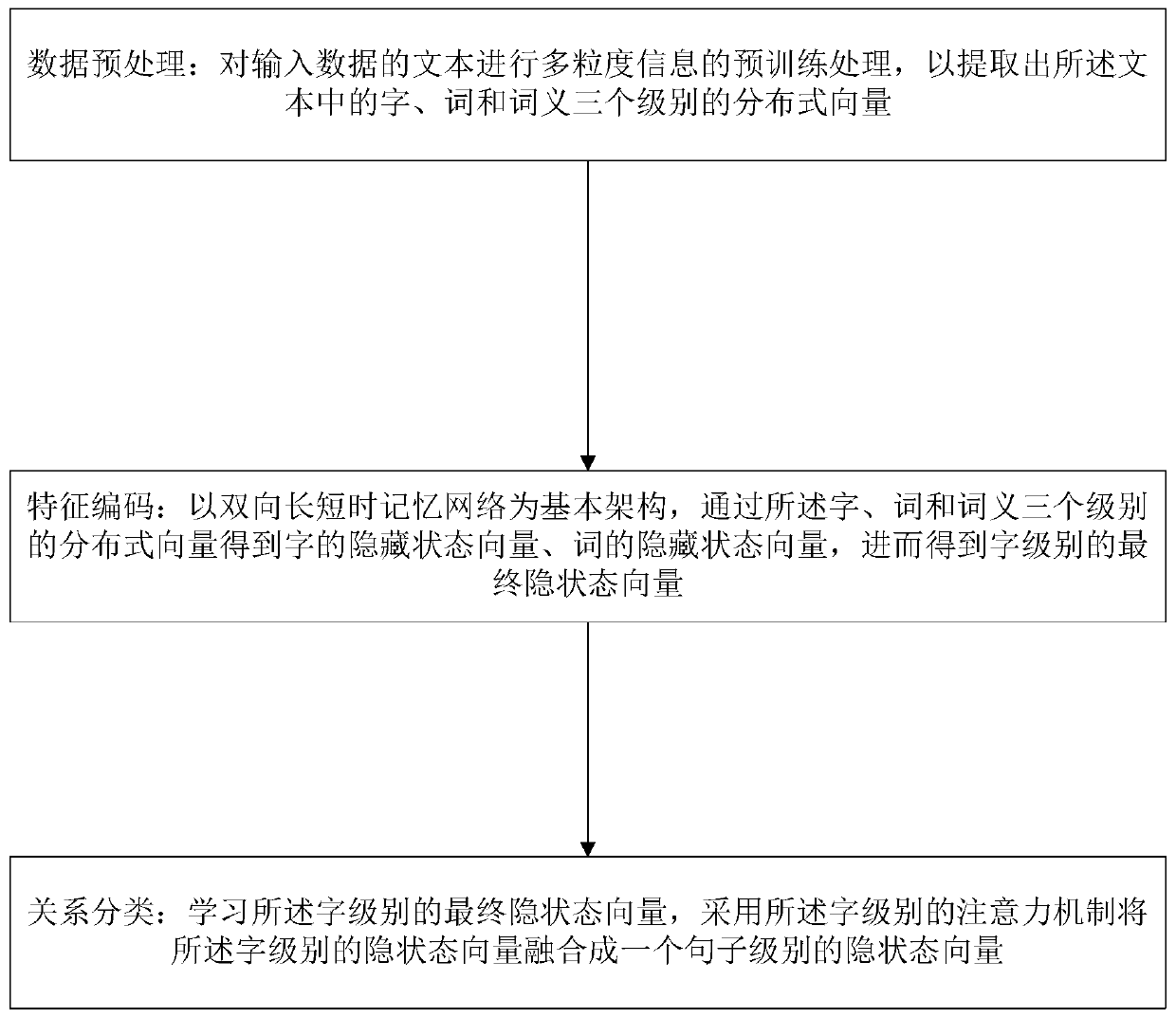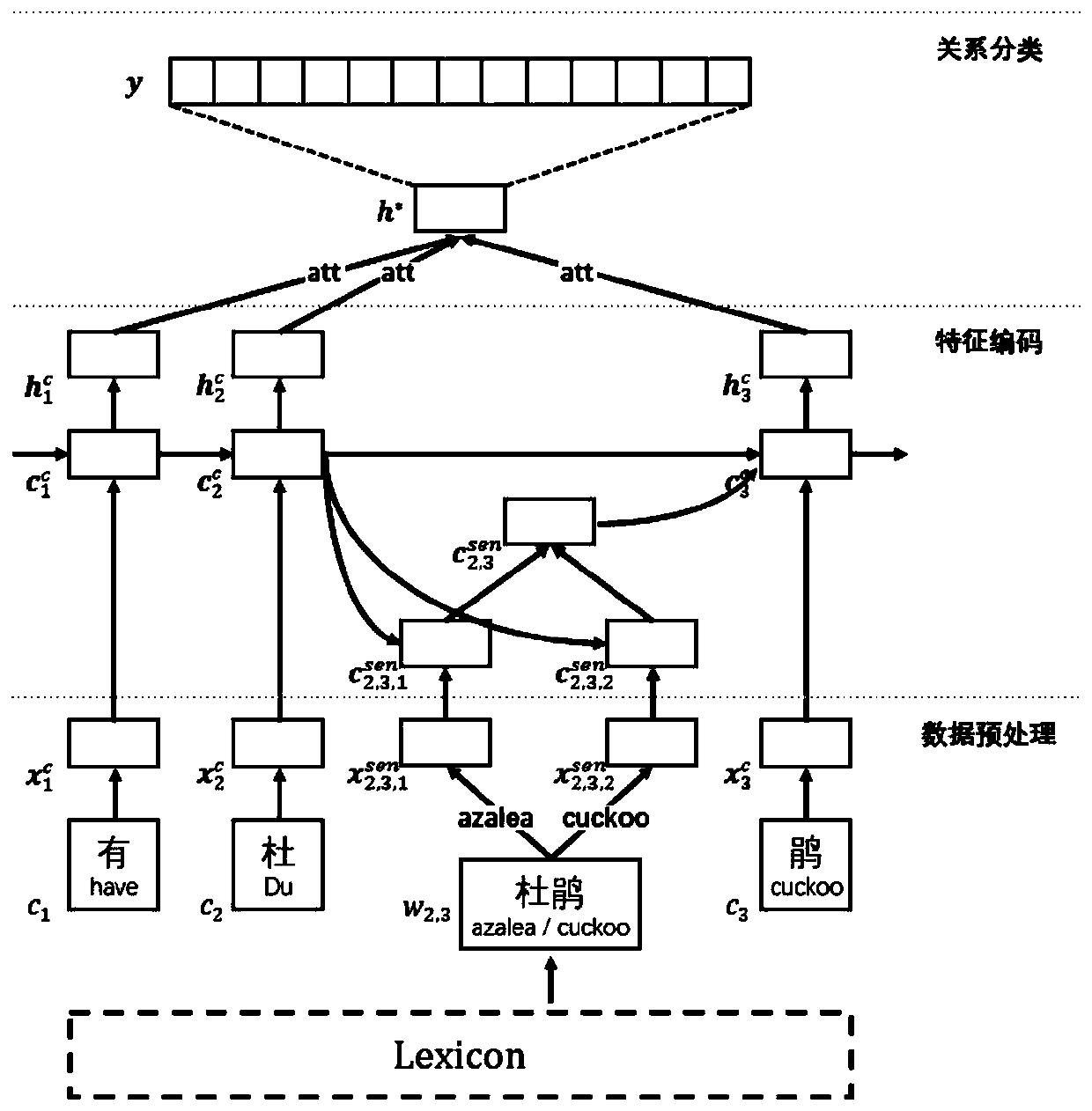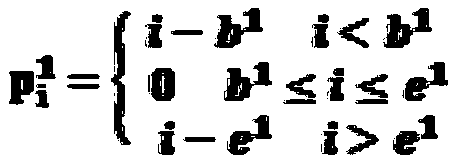Chinese relationship extraction method
A relationship extraction, Chinese technology, applied in neural learning methods, instruments, biological neural network models, etc., can solve problems such as polysemous word ambiguity and word segmentation ambiguity
- Summary
- Abstract
- Description
- Claims
- Application Information
AI Technical Summary
Problems solved by technology
Method used
Image
Examples
Embodiment 1
[0069] Such as figure 1 As shown, the present invention provides a Chinese relation extraction method. Including the following steps:
[0070] S1: Data preprocessing: perform pre-training processing on multi-granularity information on the text of the input data, so as to extract three-level distributed vectors of words, words and word meanings in the text;
[0071] S2: Feature encoding: based on the two-way long-short-term memory network as the basic structure, the hidden state vector is obtained through the distributed vectors of the three levels of words, words and word meanings, and then the final hidden state vector at the word level is obtained;
[0072] S3: Relation classification: learn the final hidden state vector at the word level, and use the attention mechanism at the word level to fuse the hidden state vector at the word level into a hidden state vector at the sentence level.
[0073] The data preprocessing step is to perform multi-granularity information pre-tr...
Embodiment 2
[0089] Such as figure 2 As shown, the present embodiment adopts the Chinese relation extraction method provided by the present invention, which is defined as a given sentence s and two specified entities in the sentence, and it is judged what relationship these two entities are in the sentence s. For example, given the sentence "All Rhododendrons in the Darwin Institute" and the designated entities "Darwin" and "Rhododendron", the goal is to determine the relationship between "Darwin" and "Rhododendron" in the sentence.
[0090] Step 1. Data preprocessing:
[0091] 1.1 Word level representation
[0092] For a given input sequence s={c 1 ,...,c M} There are M characters in total, and the present invention uses the word2vec method to convert each character (taking the i-th example) c i Both map to a word vector is the word vector of the i-th character, R is the real number space, d c is the dimension of the word vector. In addition to word vectors, this technology als...
PUM
 Login to View More
Login to View More Abstract
Description
Claims
Application Information
 Login to View More
Login to View More - R&D
- Intellectual Property
- Life Sciences
- Materials
- Tech Scout
- Unparalleled Data Quality
- Higher Quality Content
- 60% Fewer Hallucinations
Browse by: Latest US Patents, China's latest patents, Technical Efficacy Thesaurus, Application Domain, Technology Topic, Popular Technical Reports.
© 2025 PatSnap. All rights reserved.Legal|Privacy policy|Modern Slavery Act Transparency Statement|Sitemap|About US| Contact US: help@patsnap.com



